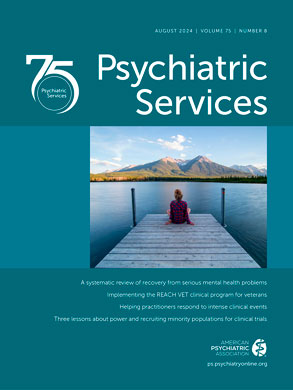In an Open Forum piece this month, "The Systemic Neglect of New York's Young Adults With Mental Illness," Robert J. Giugliano, Ph.D., focuses on a concern that was raised in this journal by my colleagues and myself in 1981: the plight of adolescents and young adults who are mentally ill. We pointed out that this population often had problems with drug and alcohol abuse. The interactivity between mental illness and substance use problems disrupted the education of these youths, kept them from holding a job, and led to their social failure. Dr. Giugliano demonstrates that the situation may be different today than it was two decades ago, but it is not better.
A majority of today's young people who have psychiatric symptoms are involved with drugs and alcohol. The National Comorbidity Survey (NCS) taught us that nearly 90 percent of youths with a mental illness and a substance use problem had their mental and emotional disorders first. This finding suggests that drugs and alcohol are often used as self-medication and the substance abuse and psychiatric disorders need to be treated concurrently, in an integrated way.
The NCS showed that among adolescents and young adults with a mental illness and substance abuse the median age at which their symptoms met DSM criteria for a mental disorder was 11 years. Substance abuse typically developed six to ten years later. The Substance Abuse and Mental Health Services Administration intends to push this information into evidence-based practices. Implementing the recommendations of the New Freedom Commission on Mental Health may begin to address the plight of our untreated youths. But meanwhile:
• Most of the available psychiatric hospital beds are gone. In 1955, a total of 559,000 state hospital beds were available; now the number is down to 60,000. In the past half century the nation's population has grown from 170 million to 270 million.
• Residential beds for treatment, recovery, or support are woefully scarce.
• The number of jail and prison cells swelled from 200,000 in 1972 to more than two million by 2002.
Today, we find a common sequence of events. Between 3 and 10 percent of children suffer from untreated trauma, neglect, attention-deficit hyperactivity disorder, depression, anxiety disorders, or bipolar conditions. The self-medication of young persons can lead to their disturbing the public order. And they may enter the criminal justice system, where their mental disorders are not treated.
Did we deinstitutionalize, or did we transinstitutionalize from hospital to prison? And whatever happened to community treatment? Wasn't that, not jail, supposed to replace unnecessary hospitalization?

